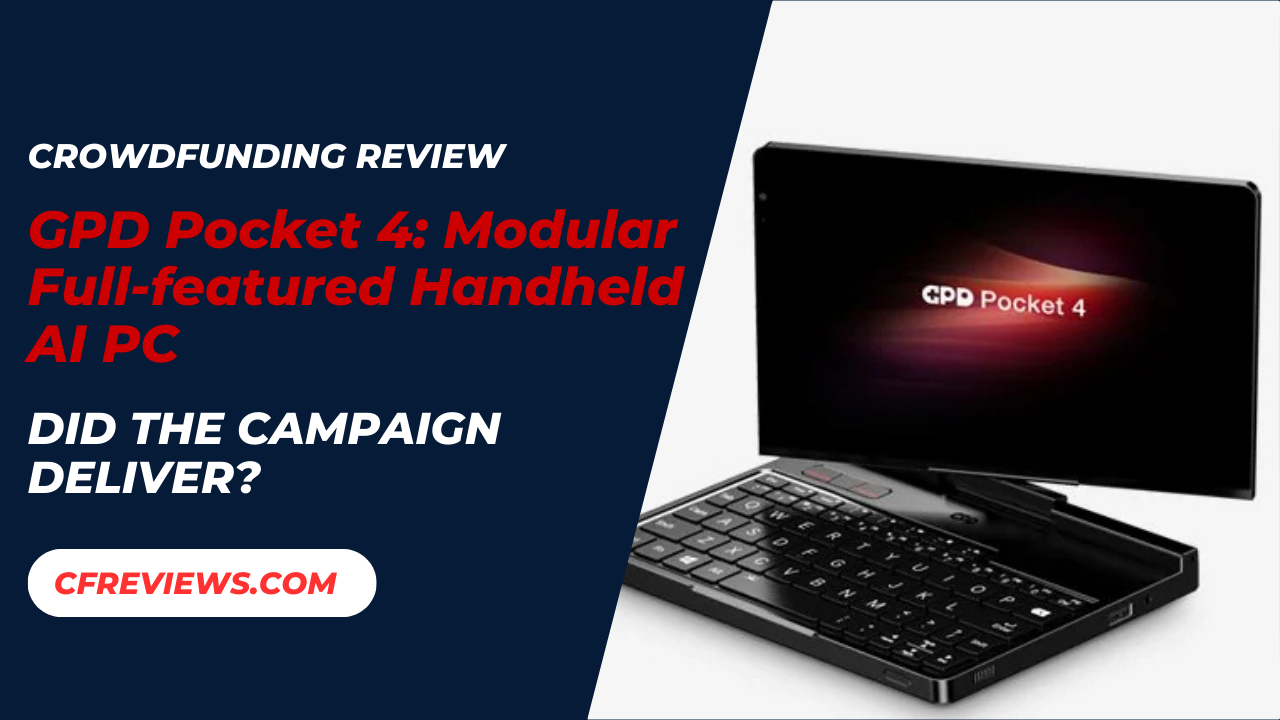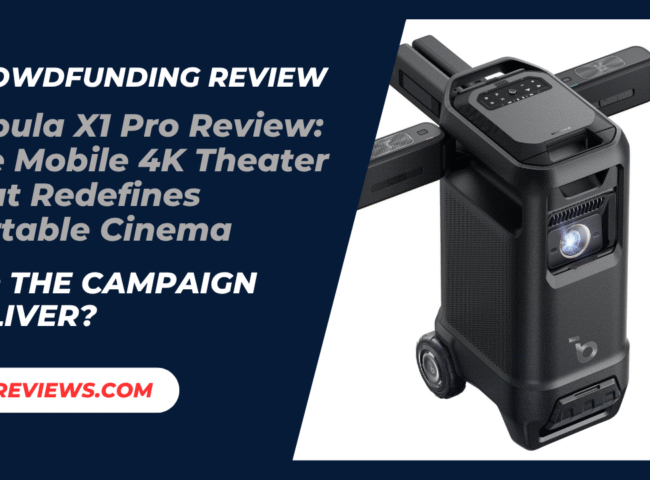Remember the GPD Pocket 4 indiegogo campaign launched as one of the most ambitious crowdfunding campaigns for a handheld AI PC. Marketed as a pint-sized workstation with modular ports, AI acceleration and LTE support. It promised to shrink the power of a desktop into your jacket pocket. But after the hype, the real question is: Did the GPD Pocket 4 deliver or did it shrink expectations instead? Let’s find out in the reviews.
Overview of the Project
The GPD Pocket 4 raised $10,393,156 HKD from 1,814 backers and also later on raised $7,406,690 HKD by 1,330 backers on indiegogo. With over $17,799,846 raised and 3,144 backers, expectations were sky-high. The campaign positioned it as the ultimate modular micro-machine, flexible, powerful and future-ready. At it’s core, the GPD Pocket 4 was pitched as a portable workstation for developers, creators and AI enthusiasts. Unlike most handheld PCs, this wasn’t just about gaming, it was about AI workloads, sever management and serious productivity.
Key promises included:
- AI-capable Ryzen 9 HX 370 chip with on-device LLM support
- USB4, HDMI 2.1, dual USB-As, 2.5GbE, RS-232, fingerprint sensor
- 144Hz 2.5K touchscreen that flips, folds and spins
- Hot-swappable modular ports including KVM and LTE options
- Compact footprint smaller than most paperbacks but specked like a workstation
It was marketed as a Swiss Army knife for power users, but has real-world usage lived up to this vision?
Specs That Rival Desktops
On paper, the GPD Pocket 4 looked unbeatable:
- CPU/GPU: AMD Ryzen 9 HX 370 with AI acceleration
- Display: 144Hz 2.5K touchscreen, foldable and rotatable
- Connectivity: USB4, HDMI 2.1, Ethernet, RS-232, fingerprint sensor
- Modularity: LTE-ready, KVM control for server admins, hot-swappable expansion
- Design: Portable form factor with more ports than many laptops
For developers and AI enthusiasts, this was pitched as a local LLM workstation you could carry anywhere.
Everyday Use: A Workstation or Just Hype?
The crowdfunding pitch was flawless, but in real-life, performance matters.
- Typing Experience: Was the mini keyboard usable for long sessions or just short bursts?
- Hinge Durability: Could it handle constant flipping, folding and rotating?
- Linux Support: Did it boot smoothly or require days of setup?
- Battery Life: Marketed as up to 9 hours, but did it hold under AI workloads or heavy multitasking?
AI in Your Pocket or Just a Fancy Brick?
Backers were promised AI-native performance with on-device LLMs. But:
- Did the AI chip handle workloads smoothly or throttle under heat?
- Were thermal issues a dealbreaker?
- Could it really replace a mobile de-station or was it more concept than reality?
Backers, Your Turn
If you backed the GPD Pocket 4, we want your hands-on stories:
- Did it arrive on time?
- How does it perform in real-world AI workloads?
- Is the keyboard and hinge durable for daily use?
- What’s the battery life like under pressure?
Drop your photos, benchmarks and unboxings. Share both the success stories and frustrations.
Read more: KIMBLADE X Review: Luxury Performance for Every Car
Final Thoughts: Did the GPD Pocket 4 Deliver?
The GPD Pocket 4 was one of the most exciting crowdfunded AI PCs in recent years. On paper, it promised everything: power, modularity, portability and AI-readiness. But the real-world story depends on backers:
- Was it worth the crowdfunding price?
- Did it actually change your workflow with local AI or server management?
- Or was it another overhyped gadget that never reached it’s potential?
Because for a device built on versatility, AI acceleration and modular design, the final verdict can only come from you, the backers.
Visit Campaign: GPD Pocket 4: Modular Full-featured Handheld AI PC







Leave feedback about this